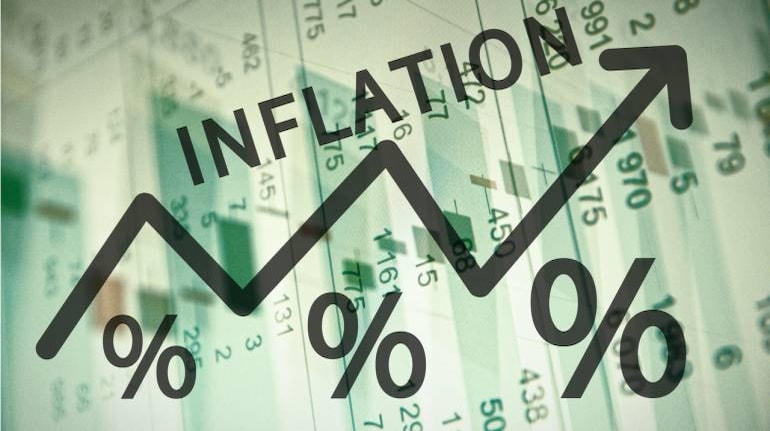



The headline retail inflation number for July, released on August 14, caught everyone by surprise – well, almost everyone. At 7.44 percent, the Consumer Price Index (CPI) inflation was the highest in 15 months and way above the consensus estimate of 6.6 percent, as per a Moneycontrol survey.
However, one of the respondents in the survey – Nikhil Gupta, economist at Motilal Oswal Financial Services – stood out. Gupta had predicted that CPI inflation would jump to 7.6 percent in July. It was by far the most pessimistic forecast at almost 70 basis points higher than the next highest estimate. As it turned out, Gupta was only 16 basis points off the mark.
"As we had expected, it was not only tomatoes last month," Gupta said, pointing out that excluding tomatoes, CPI inflation was still at a five-month high of 6.14 percent in July.
Beyond the TOP
Writing in a note in the run up to the release of the inflation data, Gupta had said that while it is usually enough to focus on price developments for three key vegetables – namely tomato, onion, and potato, or TOP – to form a view on the inflation trajectory, these are 'not normal times'. As such, he was focussing on a wider set of vegetables which made up 4.4 percent of the CPI – double the weight of the TOP vegetables - which suggested the price index of all vegetables may have increased 50 percent year-on-year in July.
"We understand that there is no one-to-one correlation and our tracker still misses one-third of the vegetables basket. Therefore, the actual CPI index could be at variance. However, a comparison of our tracker of this wider vegetables sample vis-à-vis its prices index in CPI suggests very close movements," Gupta wrote in the August 7 note.
"At 50 percent year-on-year growth in vegetables index…the headline CPI inflation could be around 8 percent in July. At 40 percent inflation in vegetables, the headline inflation will be 7.6 percent. At 30 percent, it will be 7 percent," he had said.
As it turns out, vegetable inflation in July was 37 percent.
Also Read: FinMin says rise in food inflation warrants guarded approach by govt, RBI
The tomato index of the CPI was indeed up massively in July, registering a month-on-month increase of 214 percent – the highest of any of the 299 items in the CPI basket – to give a year-on-year inflation rate of 202 percent, which was also the highest for any item.
However, there were others which have not been in the spotlight as much as the tomato that also posted eye-wateringly high sequential increase in prices: green chillies (up 46 percent month-on-month), cauliflower (32 percent), watermelon (28 percent), peas (27 percent), pumpkin and brinjal (24 percent each), and cabbage (23 percent), to name a few.
In total, prices of as many as 21 of the 299 items in the CPI basket were at least 10 percent higher in July compared to June. These 21 items make up 6.76 percent of the entire CPI basket.
No policy implications
Despite the shocking July inflation number, Gupta does not think there are 'any implications' in terms of the Reserve Bank of India's (RBI) monetary policy. For one, much of the damage was due to higher vegetable prices. If these are to be excluded, retail inflation actually only rose slightly in July to 5.4 percent from 5.2 percent in June. Further, core inflation – inflation excluding food and fuel items – was the lowest in nearly three years at 5 percent.
Core inflation is seen as an indicator of underlying demand pressures – something which monetary policy can control as opposed to supply-side shocks that are beyond the powers of central banks.
"Core services (ex-housing) inflation was also at just 3.9 percent, lowest since December 2019," Gupta added.
Also Read: Core inflation smacks of unreliability even as headline CPI filled with noise
Gupta expects vegetable prices to "correct significantly" in September and help drag down headline retail inflation below 5 percent by October.
To be fair, the RBI has already outlined its intentions.
"Given the likely short-term nature of these shocks, monetary policy can look through high inflation prints caused by such shocks for some time," Governor Shaktikanta Das commented on August 10, with the central bank expecting a CPI inflation to average 6.2 percent in July-September before easing to 5.7 percent in the October-December period and 5.2 percent in the first quarter of 2024.
Discover the latest Business News, Sensex, and Nifty updates. Obtain Personal Finance insights, tax queries, and expert opinions on Moneycontrol or download the Moneycontrol App to stay updated!
Find the best of Al News in one place, specially curated for you every weekend.
Stay on top of the latest tech trends and biggest startup news.